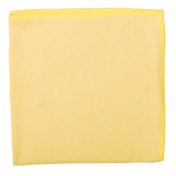Limescale stains are unavoidable in the bathroom. Wherever water splashes, the familiar light stains will sooner or later develop. The limescale contained in our drinking water builds up and forms unsightly spots. However, with the right strategy and the right products, the stains can be easily removed.
How to remove limescale from fittings
Limescale deposits are particularly noticeable on fittings. However, there are a few things to keep in mind when cleaning.
The material of the fittings
Bathroom fittings are made from a wide variety of materials. Stainless steel fittings are probably the most common, but chrome-plated taps are also not uncommon. To avoid permanent damage to the surfaces, the instructions on the cleaning products used should always be followed.
The material of the cleaning cloths
You should also make sure that the cloths you use for cleaning do not cause damage to the surfaces. Contrary to your initial instinct to scrub away the limescale with rough sponges, you should instead tackle limescale with soft cloths and the right cleaner. This is gentle on the fittings and is more than enough to remove limescale without leaving any residue. After cleaning the fittings, you should always rinse them with plenty of water . There should be no cleaning agent residue left on the fittings. Dry polishing with a leather cloth will make the fittings shine again.
Tips against limescale stains
Limescale residue is also a big nuisance in shower cubicles. If you wipe the surfaces in the cubicle with a cloth after every shower , you can prevent stains very well. Not everyone is so disciplined when it comes to cleaning, so residues are already clearly visible after a while and are no longer so easy to remove.
Common household helpers against limescale
A good way to combat limescale is with rinse aid , as is normally used in dishwashers. Simply dilute it slightly with water and put it on a cloth and rub the dirty area. For extremely stubborn stains, heavily diluted vinegar essence can be used. Here again, it is important to ensure that the surface to be cleaned is not damaged. From our range, we at Dr. Schnell recommend Milizid - an extremely good limescale remover. The easiest way to prevent heavy limescale contamination is to clean regularly. But even heavy deposits are not a problem with the right cleaners. Always make sure that you do not use cleaners that are too strong. Also read our article "How do I choose the right pH value?"



